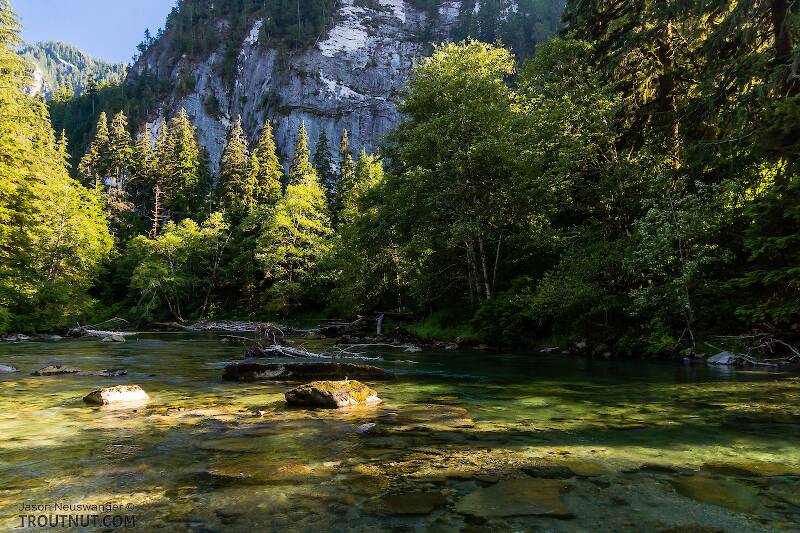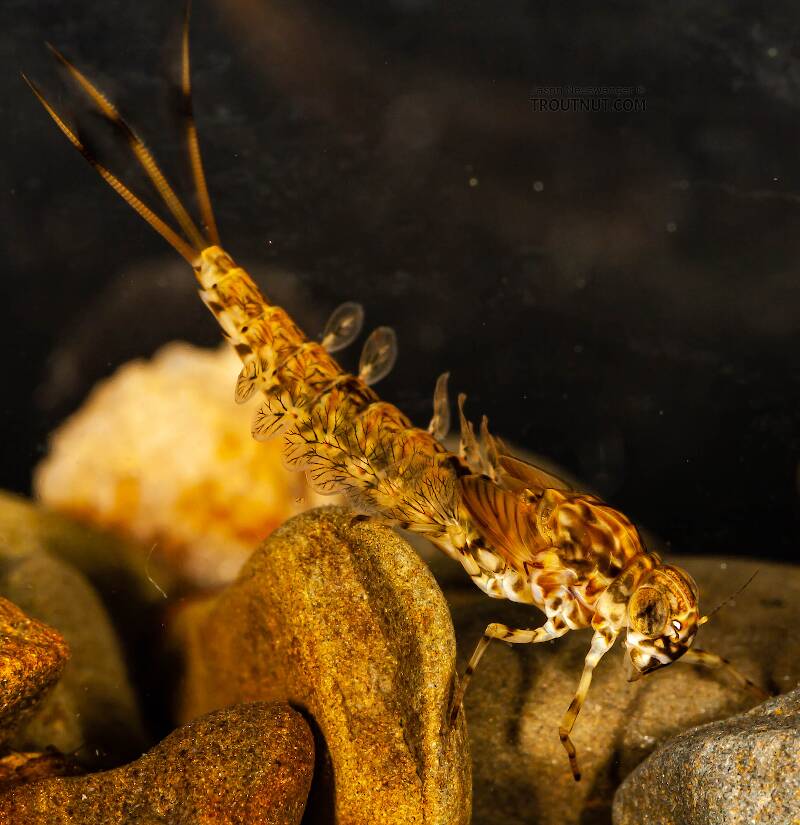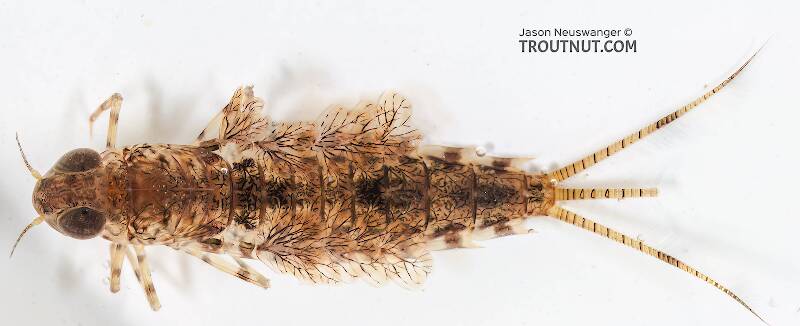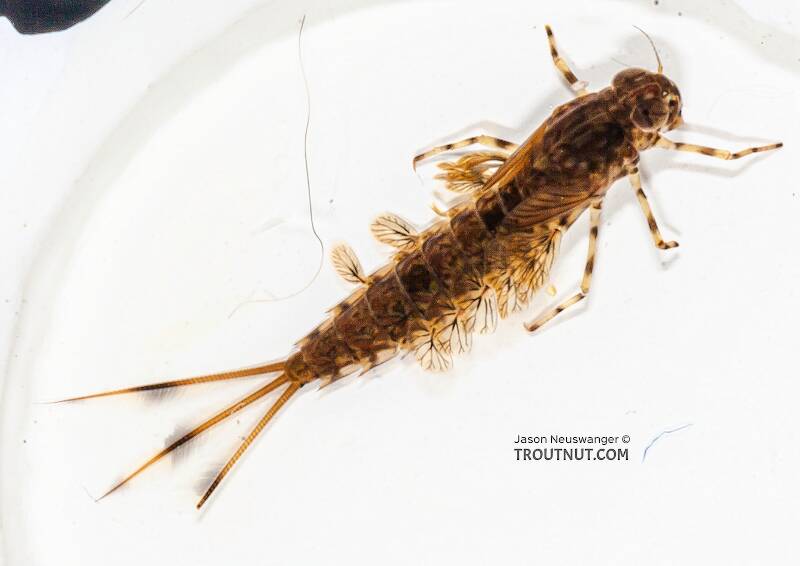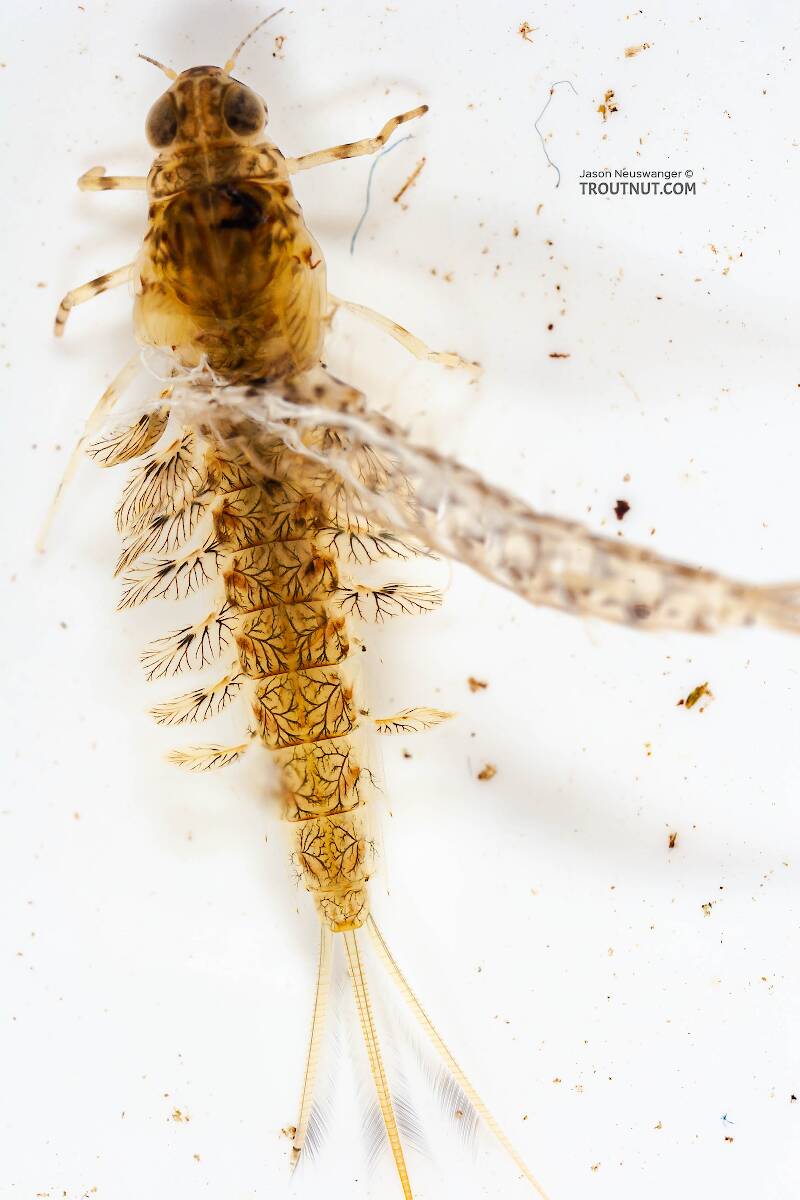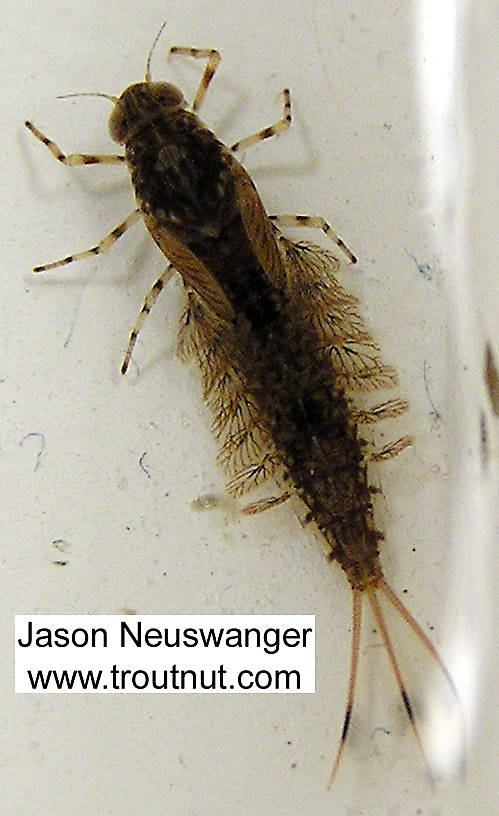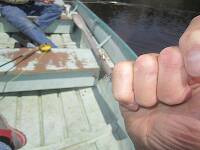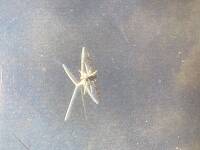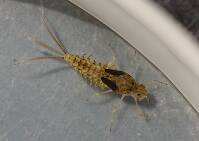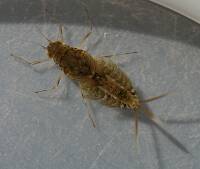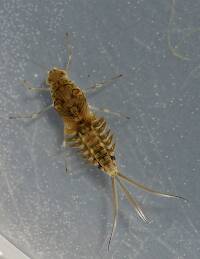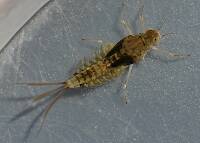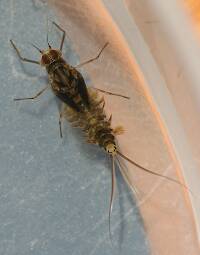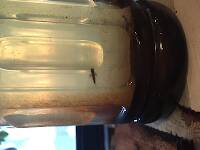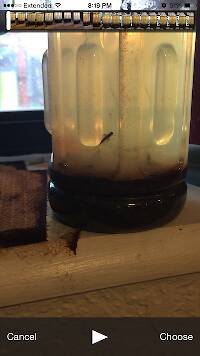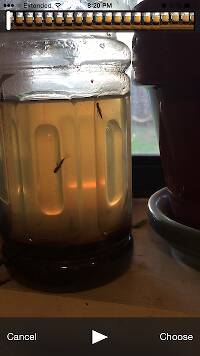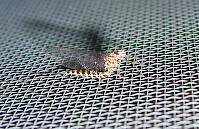
Blue-winged Olives
Baetis
Tiny Baetis mayflies are perhaps the most commonly encountered and imitated by anglers on all American trout streams due to their great abundance, widespread distribution, and trout-friendly emergence habits.
Featured on the forum

Troutnut is a project started in 2003 by salmonid ecologist Jason "Troutnut" Neuswanger to help anglers and
fly tyers unabashedly embrace the entomological side of the sport. Learn more about Troutnut or
support the project for an enhanced experience here.
This topic is about Couplet 9:
It is surprisingly difficult to find an easy characteristic to separate Siphlonurus from Callibaetis nymphs, except by size at maturity, and there's some overlap in that. The mouthpart characteristic (notched labrum) in Couplet 16 of the Key to Families of Mayfly Nymphs is definitive, but that's difficult to use without a microscope.
| Option 1 | Option 2 |
|---|---|
| Body relatively large, 9–17 mm when mature | Body smaller, 6–10 mm when mature |
| Found more often in rivers, although usually in slower habitats | Found more often in lakes, although sometimes abundant in slow-moving river habitats |
5 Example Specimens | 1 Example Specimen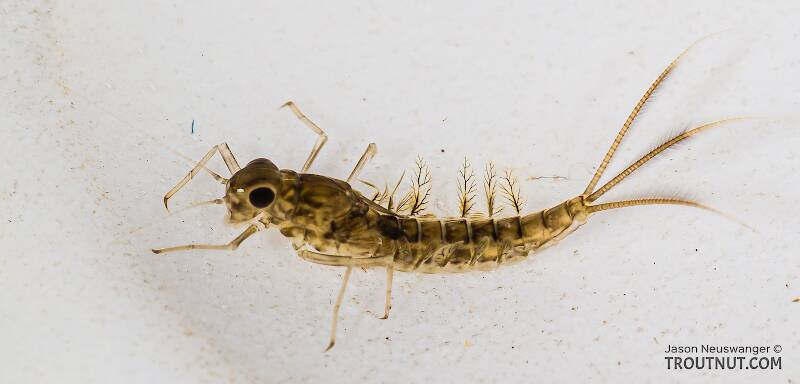
This nymph was one of a horde I could see cruising the still shallows of a cold tailwater, mixed in with an intense emergence of duns. It's one of four specimens I photographed together from the same hatch, also including a male dun, a female dun, and a male spinner.
This nymph keys to either Callibaetis ferrugineous or Callibaetis pallidus. The lack of a darkened preapical band on the femora would suggest pallidus, but I can't definitively make out the "single seta" on the outer, ventral apex of any of the tarsi, the length of which is supposedly a more reliable characteristic to tell the species spart. I can maybe make something out on one of the legs at the highest magnification, and its dimensions would suggest ferrugineous. |
| Siphlonuridae Genus Siphlonurus | Baetidae Genus Callibaetis This branch only goes to Callibaetis within the broad family Baetidae, most of which lead elsewhere in the key due to their different gill structure. |
Troutnut on May 11, 2023May 11th, 2023, 12:15 am EDT
I can recognize them at a glance, but it's hard to put that into words. In constructing this "easy angler's key," this was one of the hardest distinctions to make without reference to technical characteristics that aren't available to the average person without a microscope and some training and dissection tools. I'm wondering if anybody else knows some good, easy-to-use methods to tell these two apart besides size and slightly different habitat preferences.
Jason Neuswanger, Ph.D.
Troutnut and salmonid ecologist
Troutnut and salmonid ecologist
Quick Reply
Related Discussions
Topic
Replies
Last Reply
1
Aug 30, 2010
by GONZO
by GONZO
6
Jun 20, 2008
by GONZO
by GONZO

